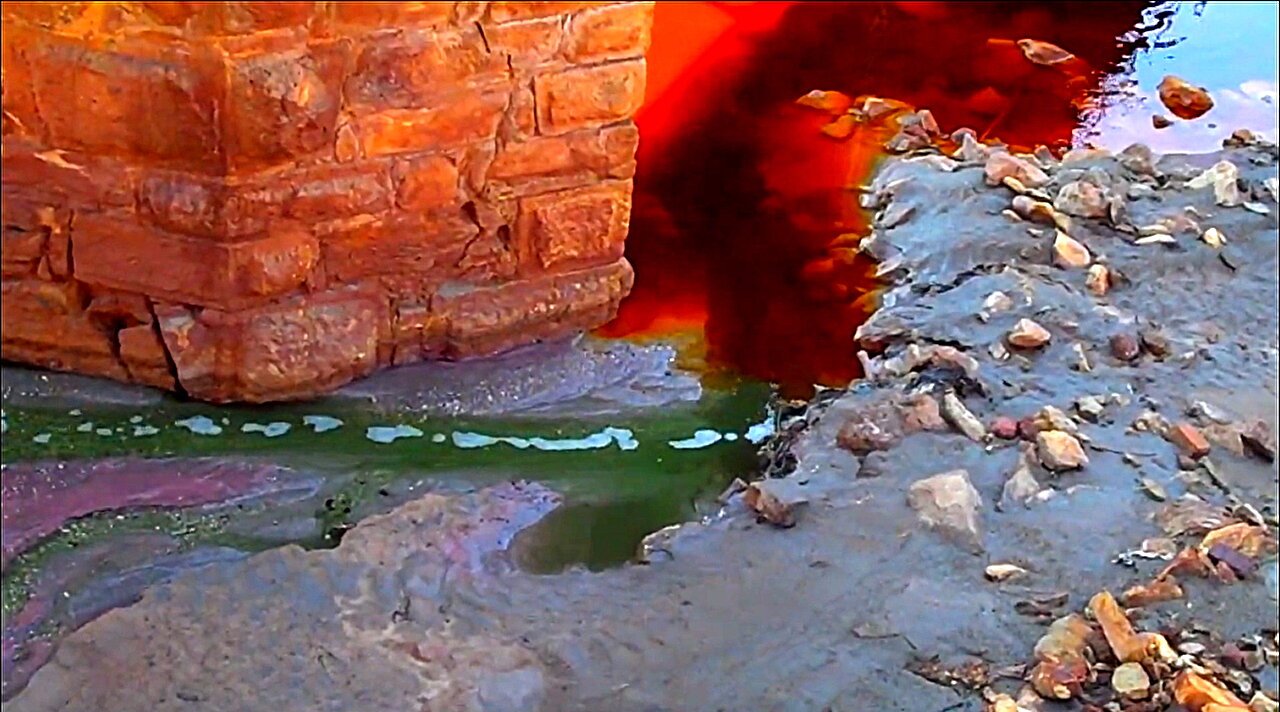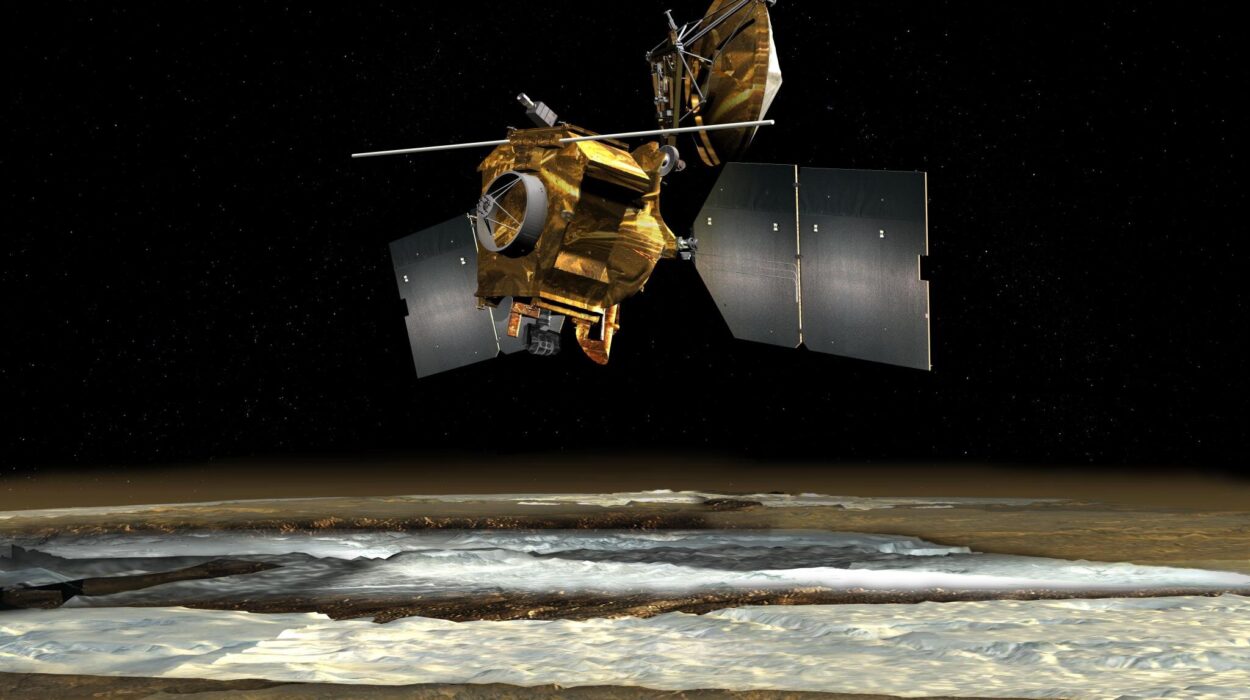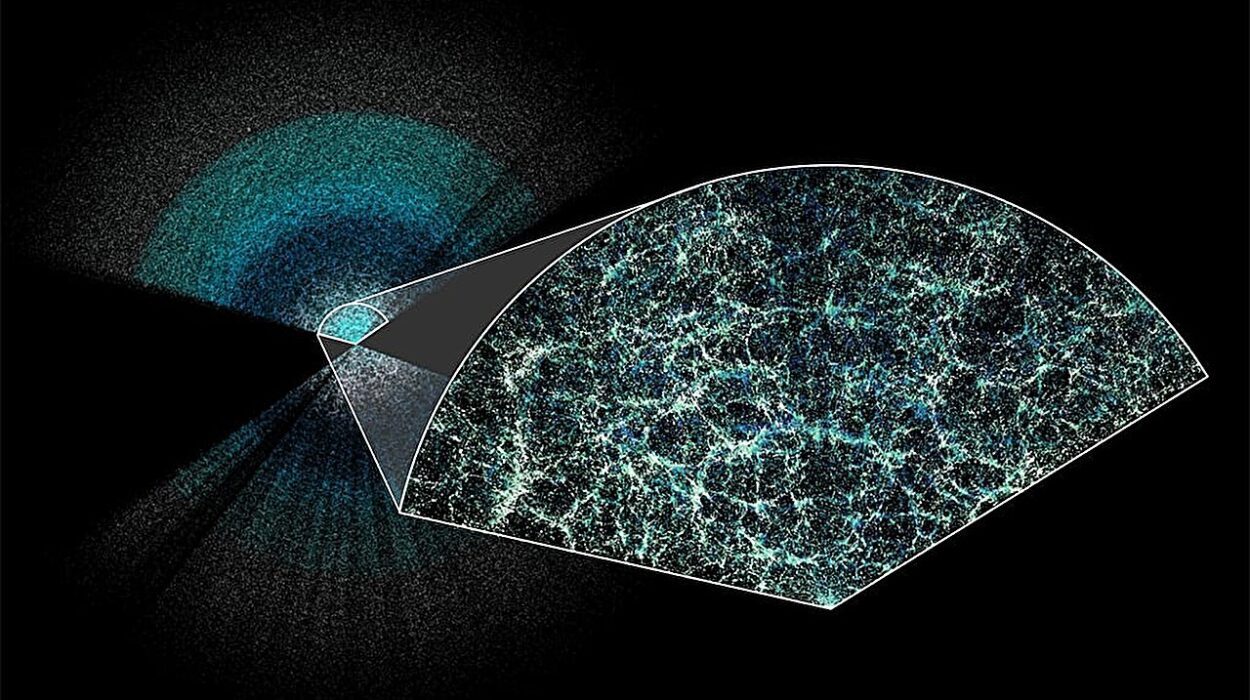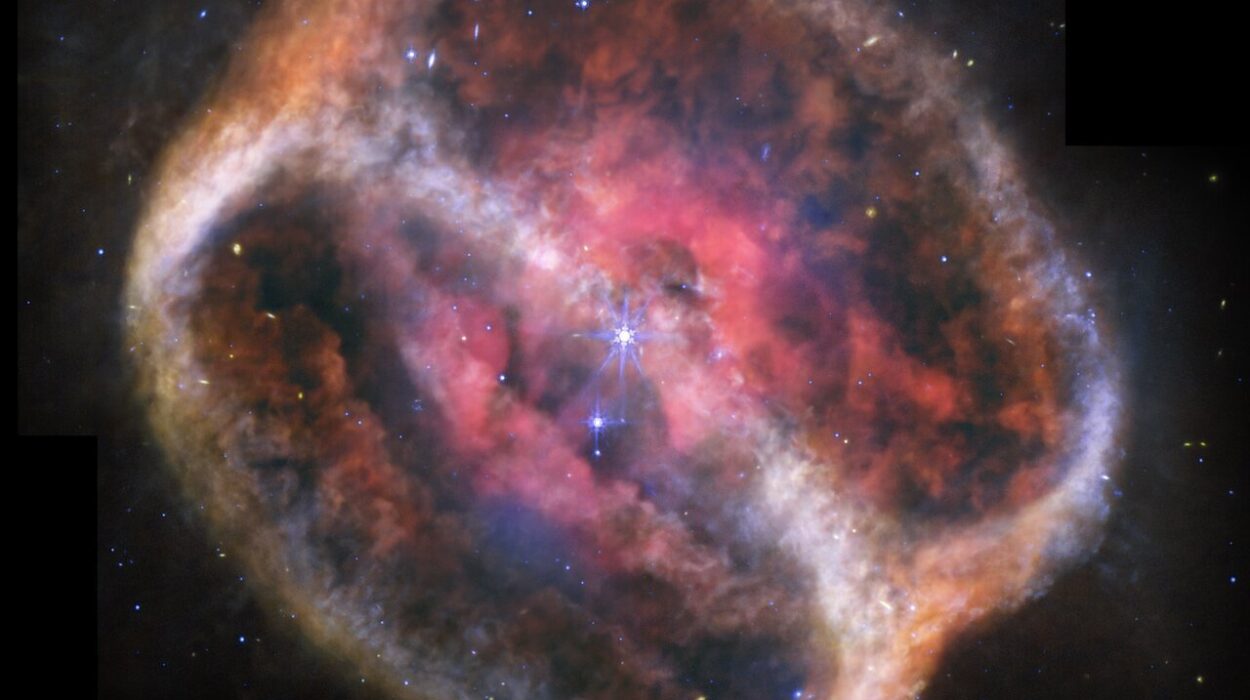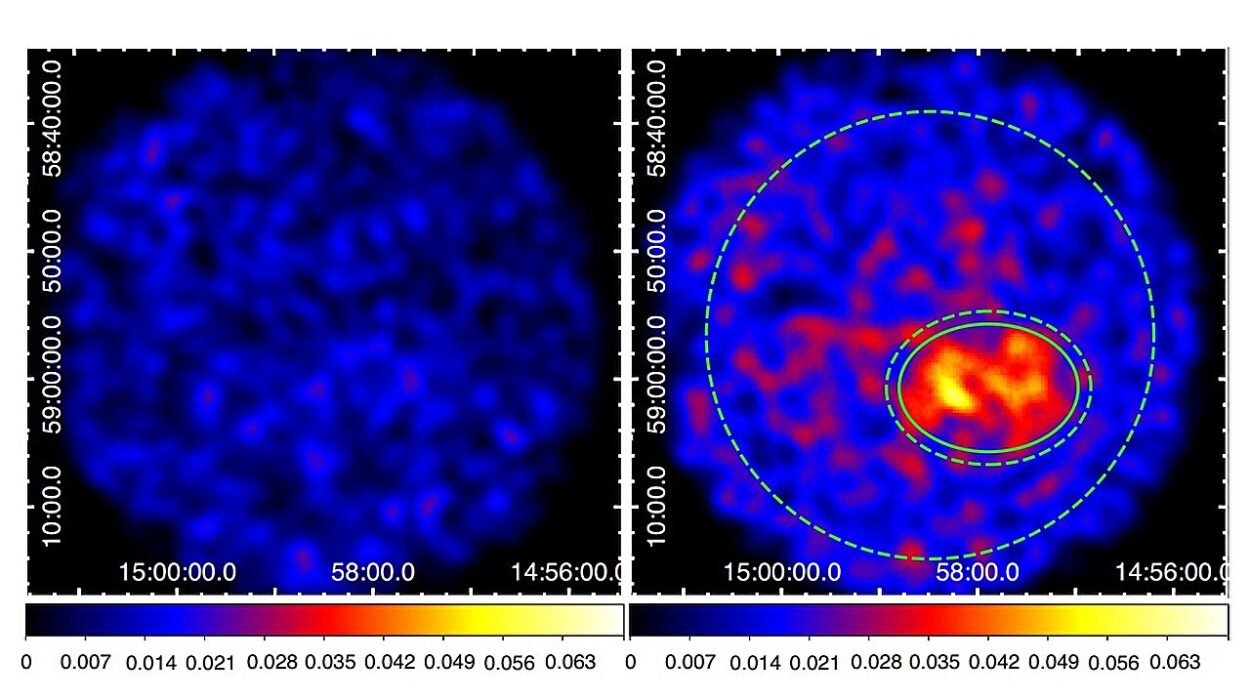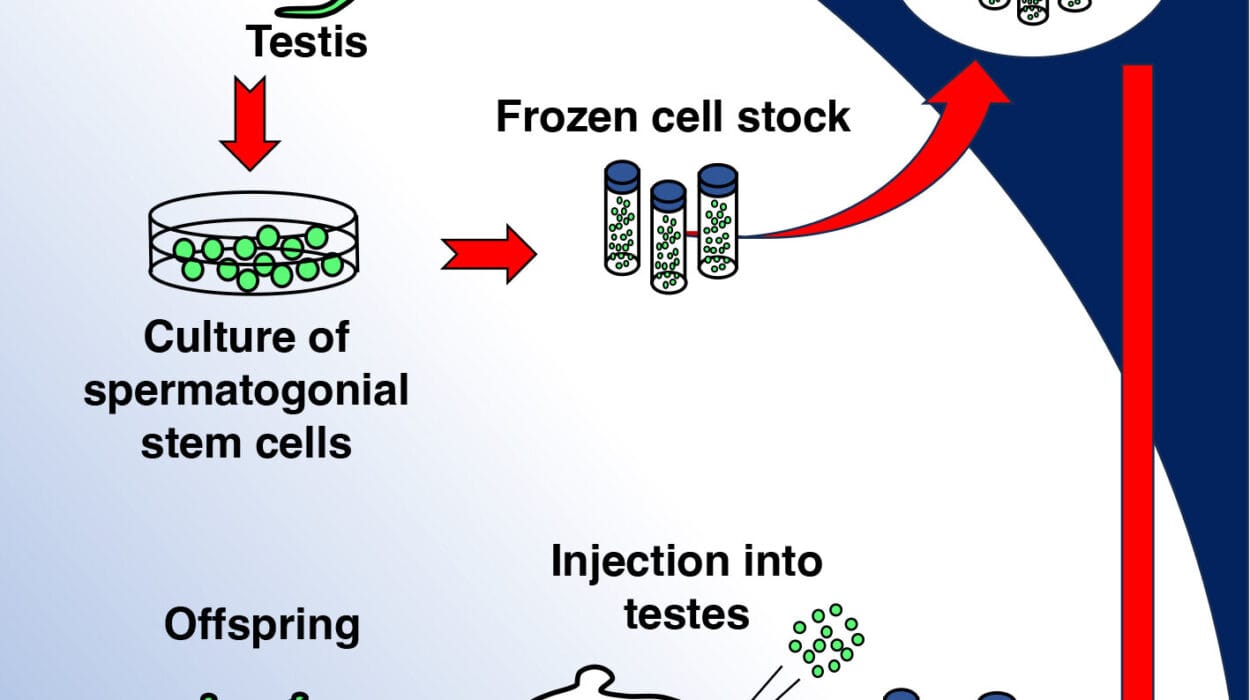Sometimes, the greatest stories of planets are written in their smallest grains. Buried in ancient rocks, dissolved in acidic waters, or shimmering in veins of what miners once called “fool’s gold,” lie the quiet signatures of life and atmosphere. For geochemists, these signatures are more than chemical curiosities—they are time capsules, preserving the whispers of early Earth’s environment, and perhaps even clues to life on Mars.
A new study led by Issaku Kohl, a geochemist at the University of Utah, takes this cosmic detective work to a remarkable place: the rust-colored waters of Spain’s Rio Tinto. This river, born from centuries of mining, is both toxic and magnificent. It snakes through the Andalusian hills, glowing with deep reds and oranges, carrying acids, metals, and bacteria in its currents. It may look like a scar of human industry—but to scientists, it is a portal to the deep past, and possibly, to another world entirely.
Sulfates: Time Capsules of Atmospheres
Sulfates—minerals containing sulfur and oxygen—are nature’s record-keepers. They form when sulfur-bearing minerals like pyrite (iron sulfide, also known as “fool’s gold”) oxidize. Over time, these reactions trap oxygen atoms from the surrounding environment—atoms that carry unique isotopic fingerprints. Because sulfates can remain stable for billions of years, they preserve a memory of the atmosphere that created them.
In essence, every grain of sulfate is a chemical diary of ancient air. Its oxygen isotopes—variants of oxygen atoms differing by mass—reflect the balance between oxygen from water and oxygen from the atmosphere at the moment of formation. By reading these isotopic ratios, scientists can reconstruct what Earth’s atmosphere was like billions of years ago. And since Mars also hosts abundant sulfate minerals, these same clues might tell us whether the Red Planet once shared not only Earth’s chemistry but its biology.
Fool’s Gold and Microbial Alchemy
The Rio Tinto’s acidic waters bubble with chemistry that seems alien but is very much alive. Beneath its surface thrive extremophile microbes—organisms that love acid and metal-rich environments. Chief among them is Acidithiobacillus ferrooxidans, a bacterium so ancient that it may predate photosynthesis itself. This microbe doesn’t need sunlight to survive. Instead, it feeds on metals, drawing energy from the oxidation of iron and sulfur—turning “fool’s gold” into something far more valuable: insight into the earliest energy systems of life.
In the new study, Kohl and his team examined how pyrite oxidation—essentially the chemical “rusting” of iron sulfide—differs in environments full of microbes compared to those without them. What they discovered changes how we understand both biology and planetary evolution.
Oxygen From the Air, Not the Water
By measuring the triple oxygen isotopes in sulfate (the ratios of ¹⁶O, ¹⁷O, and ¹⁸O), the researchers could determine where the oxygen atoms came from. Was it dissolved in water? Or was it pulled directly from the air?
In microbe-free environments, oxidation of pyrite usually relies on oxygen from water molecules. But in Rio Tinto’s living ecosystem, the microbes act as energetic mediators. The team found that in these microbial-rich zones, an astonishing 80–90% of the oxygen in the resulting sulfate came straight from the atmosphere.
This was the first time such a phenomenon had been observed outdoors, in natural conditions. Previous laboratory experiments had hinted at it, but the signals always faded quickly. In Rio Tinto, however, the atmospheric oxygen imprint endured—preserved by the ongoing activity of microbes.
As Kohl explained, “This is the first time where we’ve seen outdoors, not in the lab, that we can perpetuate this direct reaction between O₂ and pyrite sulfur if the environmental conditions are just right.”
In other words, the microbes were orchestrating a reaction that locked the fingerprint of the atmosphere into stone.
A Window Into Early Earth
Billions of years ago, Earth was an alien world—an oxygen-poor, acidic planet dominated by microbial life. The first whispers of oxygen began to appear as microbes evolved new ways to extract energy from their environment. These early life forms transformed the planet’s chemistry, eventually leading to the Great Oxidation Event roughly 2.4 billion years ago.
But direct evidence from that era is rare. Rocks that old have often been crushed, melted, or erased by time. Sulfate minerals with atmospheric oxygen signatures could therefore serve as some of the most precious records of early life’s activities.
By identifying how modern microbial processes preserve these isotopic clues, scientists can learn how to recognize similar fingerprints in ancient rocks. Each sulfate crystal might represent a microscopic snapshot of a moment when life and atmosphere first intertwined.
Mars: A Mirror in Red
The beauty of this discovery is that it doesn’t just illuminate Earth’s past—it could also point to Mars’s. The Red Planet’s surface is strewn with sulfate-rich deposits, especially in regions once shaped by water. NASA’s Curiosity and Perseverance rovers have been exploring these regions for years, drilling, sampling, and searching for signs of ancient habitability.
The leading theory has been that Martian sulfates formed when volcanic gases like sulfur dioxide were oxidized in the thin atmosphere. But as Kohl’s study shows, there could be another possibility—one that involves life.
If Mars once had localized acidic environments, perhaps around volcanic springs or evaporating lakes, microbes similar to those in Rio Tinto could have driven pyrite oxidation in the same way. Such environments would leave distinct isotopic signatures—ratios that scientists can now recognize thanks to studies like this one.
“We now have geochemical markers or criteria that would allow you to find a similar environment or remnants of a similar environment in the rock record, either on Earth or in an extraterrestrial setting,” Kohl explained.
The Search for Martian Biosignatures
The next great step in planetary science may come when samples from Mars are finally returned to Earth. Both NASA and the European Space Agency have been developing missions to bring back the rocks that Perseverance is currently collecting in Jezero Crater—a place believed to have once hosted a lake.
When those samples arrive, researchers will be able to measure their triple oxygen isotopes with incredible precision. If they detect an unusually high proportion of atmospheric oxygen in sulfate minerals—similar to what Rio Tinto’s microbes produce—it could suggest that Mars once hosted biochemical reactions powered by life.
Still, Kohl cautions that the science isn’t there yet. “We’re two steps away from being able to determine whether rock samples from Mars bear conclusive evidence of past microbial life,” he said. “First, the samples would have to be indicative of a very low-pH (acidic), O₂-oxidation-dominant environment, rich in a particular ion of iron(2+).”
The Rio Tinto: A River of Paradox
The Rio Tinto is a place of contradictions. Its blood-red waters are poisoned with heavy metals and sulfuric acid, yet they teem with microbial life. Its landscape is scarred by human industry, yet it offers clues to the untouched origins of biology.
For centuries, miners extracted copper and iron from its rocks, leaving behind acid drainage and abandoned tunnels. Now, scientists walk those same paths not to mine metals but to mine meaning—to uncover how life interacts with the most hostile chemistry imaginable.
In this way, Rio Tinto becomes both a warning and a wonder: a testament to the resilience of life and a reminder of how fragile our environment can be.
Oxygen, Life, and the Cosmic Connection
The story of oxygen is also the story of life itself. On Earth, the rise of oxygen in the atmosphere was both a cause and consequence of evolution. Microbes transformed the planet’s chemistry, paving the way for complex life. Oxygen became the breath of our world—the invisible thread linking every organism.
Now, by tracing the fingerprints of that same oxygen in sulfates, we glimpse not just our own past, but the potential universality of life. If Mars once shared this chemistry—if its sulfates, too, bear the mark of atmospheric oxygen mingling with microbial activity—then perhaps life is not unique to Earth.
The Promise of Isotopic Time Travel
Geochemistry allows scientists to travel through time—not with machines, but with measurements. The ratios of isotopes in a crystal can reveal ancient temperatures, environmental conditions, and even the presence of living organisms. In this sense, every rock becomes a record, every atom a storyteller.
Kohl’s team has shown that under just the right conditions—acidic waters, active microbes, exposed pyrite—the connection between life and atmosphere can be immortalized in stone. And once we know how to recognize that connection, we can search for it everywhere: in the oldest rocks on Earth, in Martian sediment, or perhaps one day on moons like Europa and Enceladus.
More information: Issaku E. Kohl et al, Triple-oxygen isotopic evidence of prolonged direct bioleaching of pyrite with O2, Earth and Planetary Science Letters (2025). DOI: 10.1016/j.epsl.2025.119639
